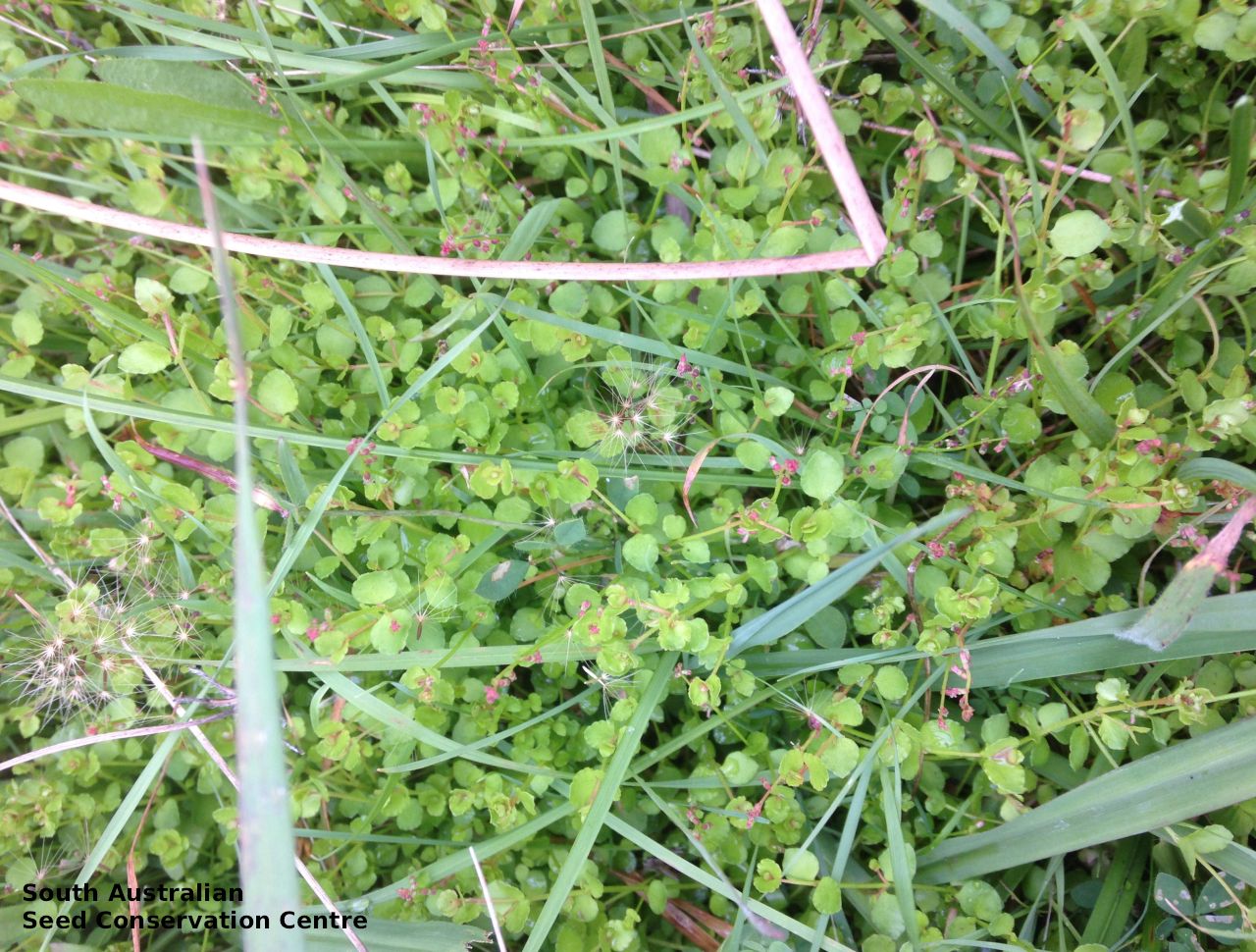
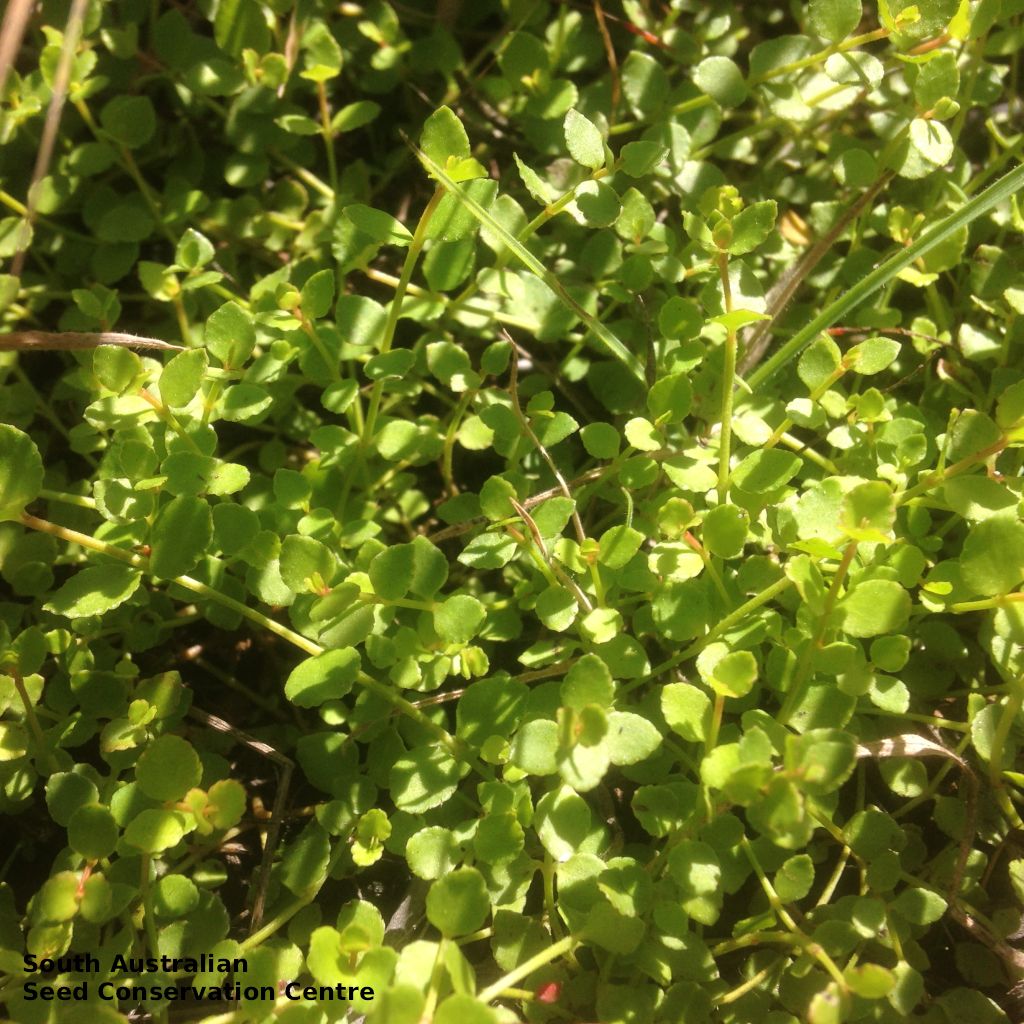
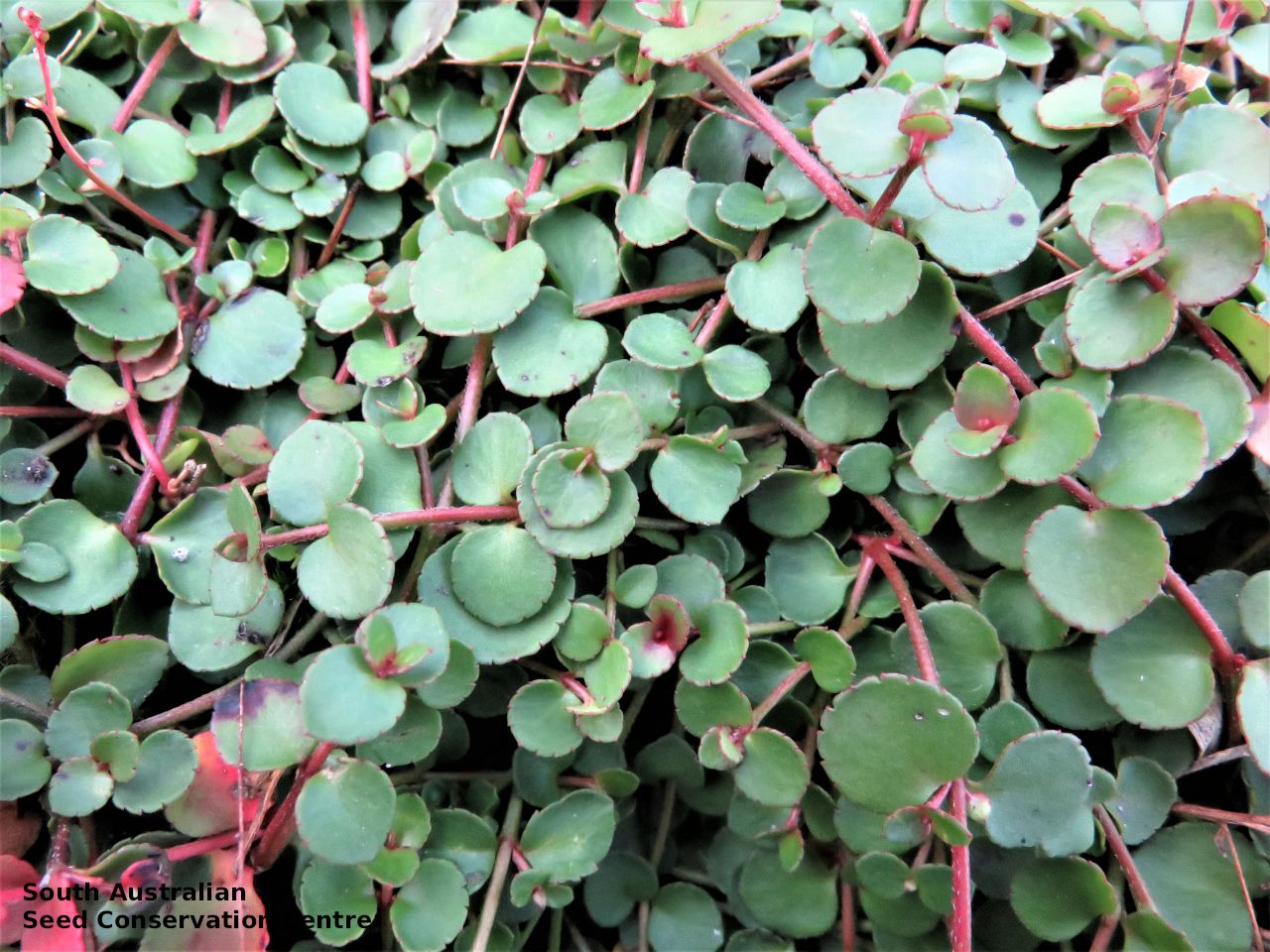
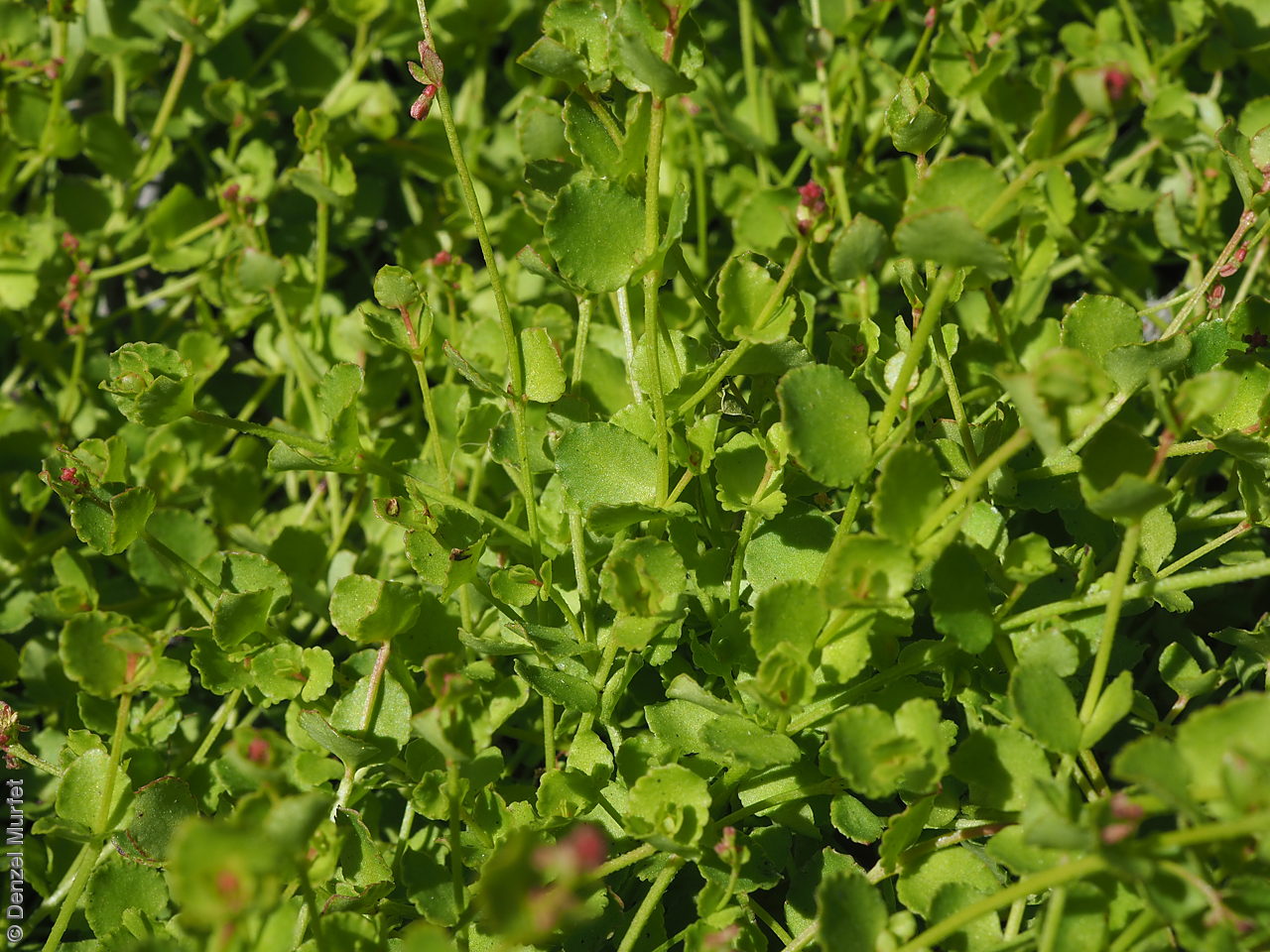
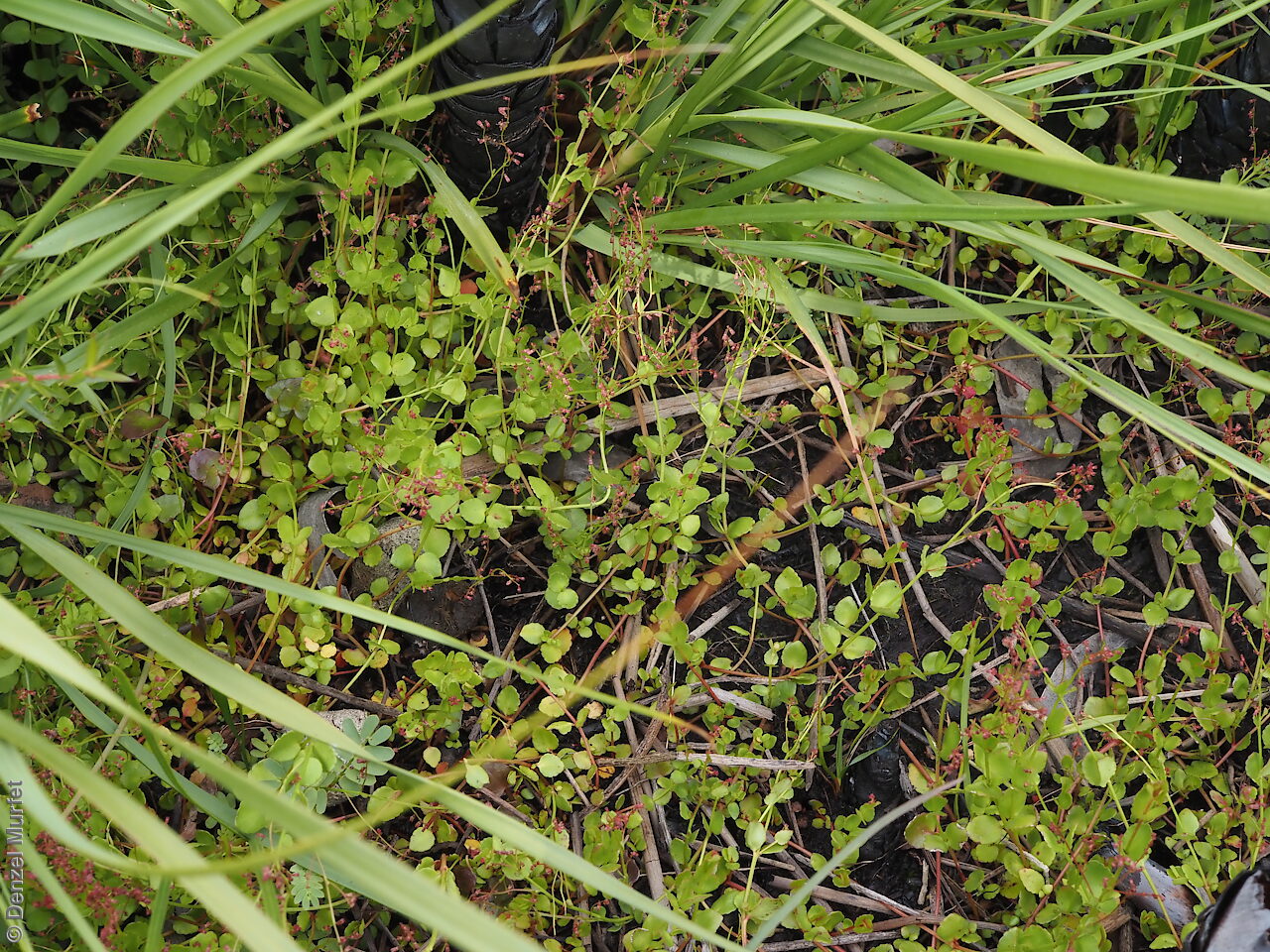
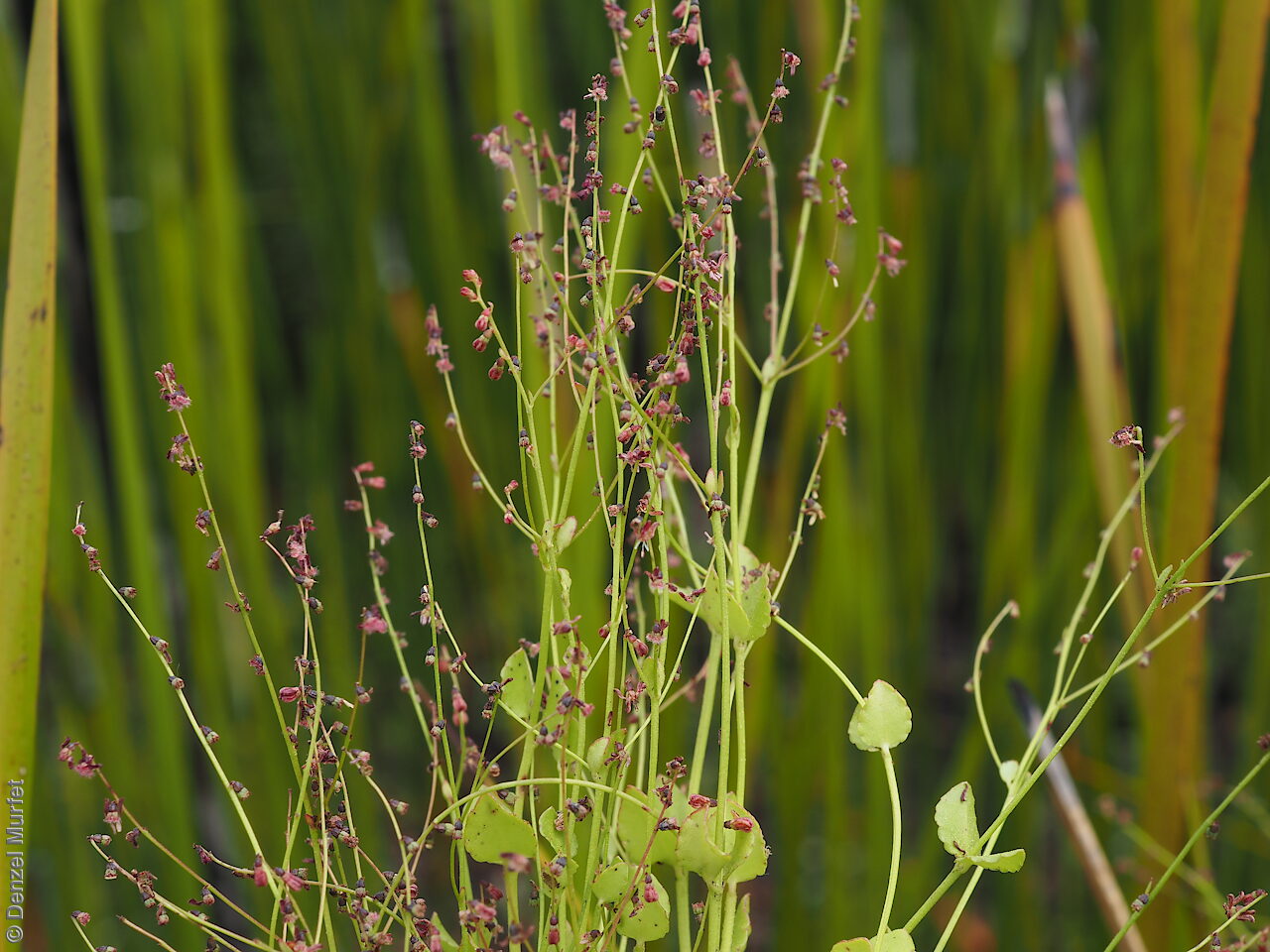
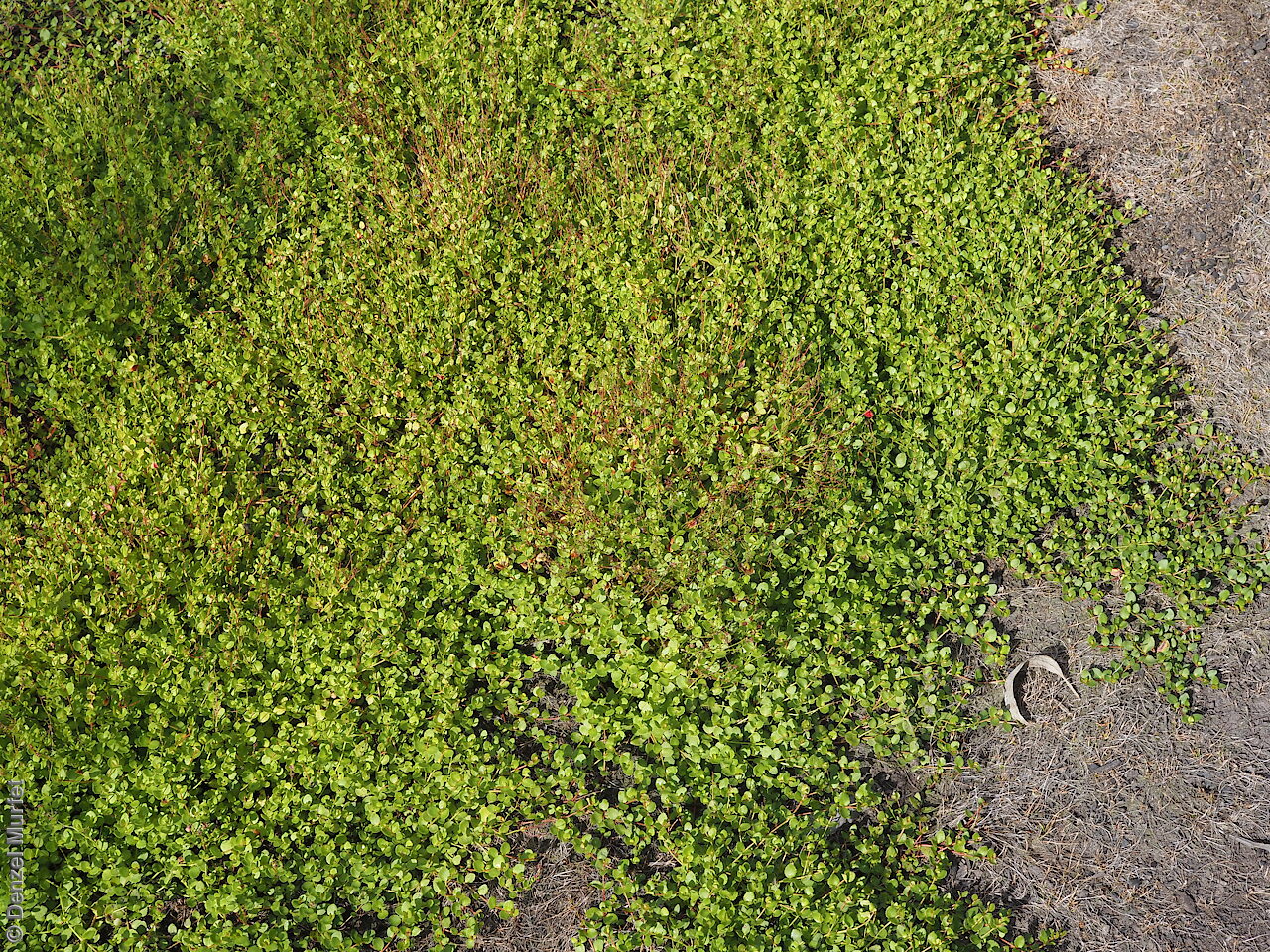
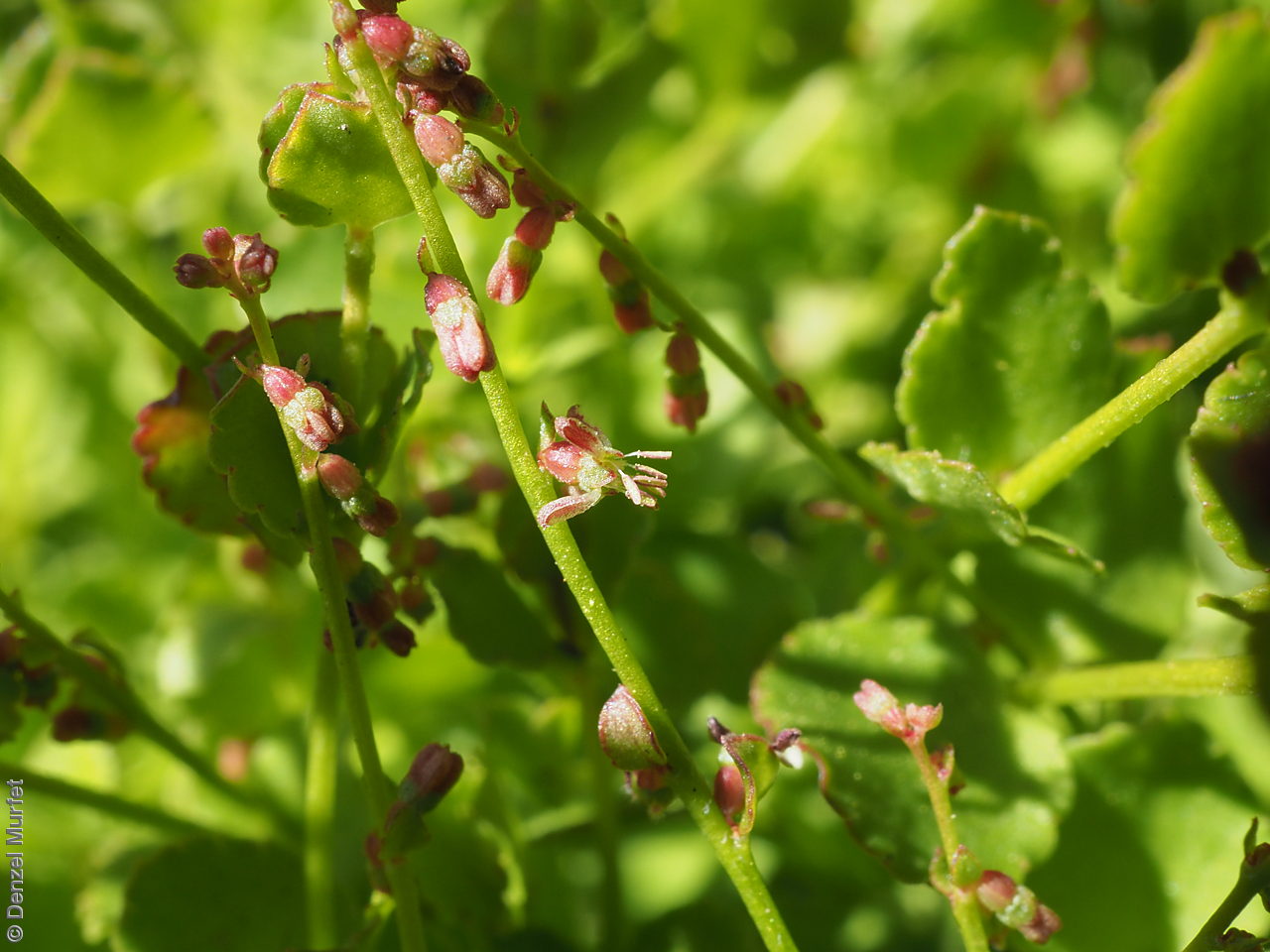
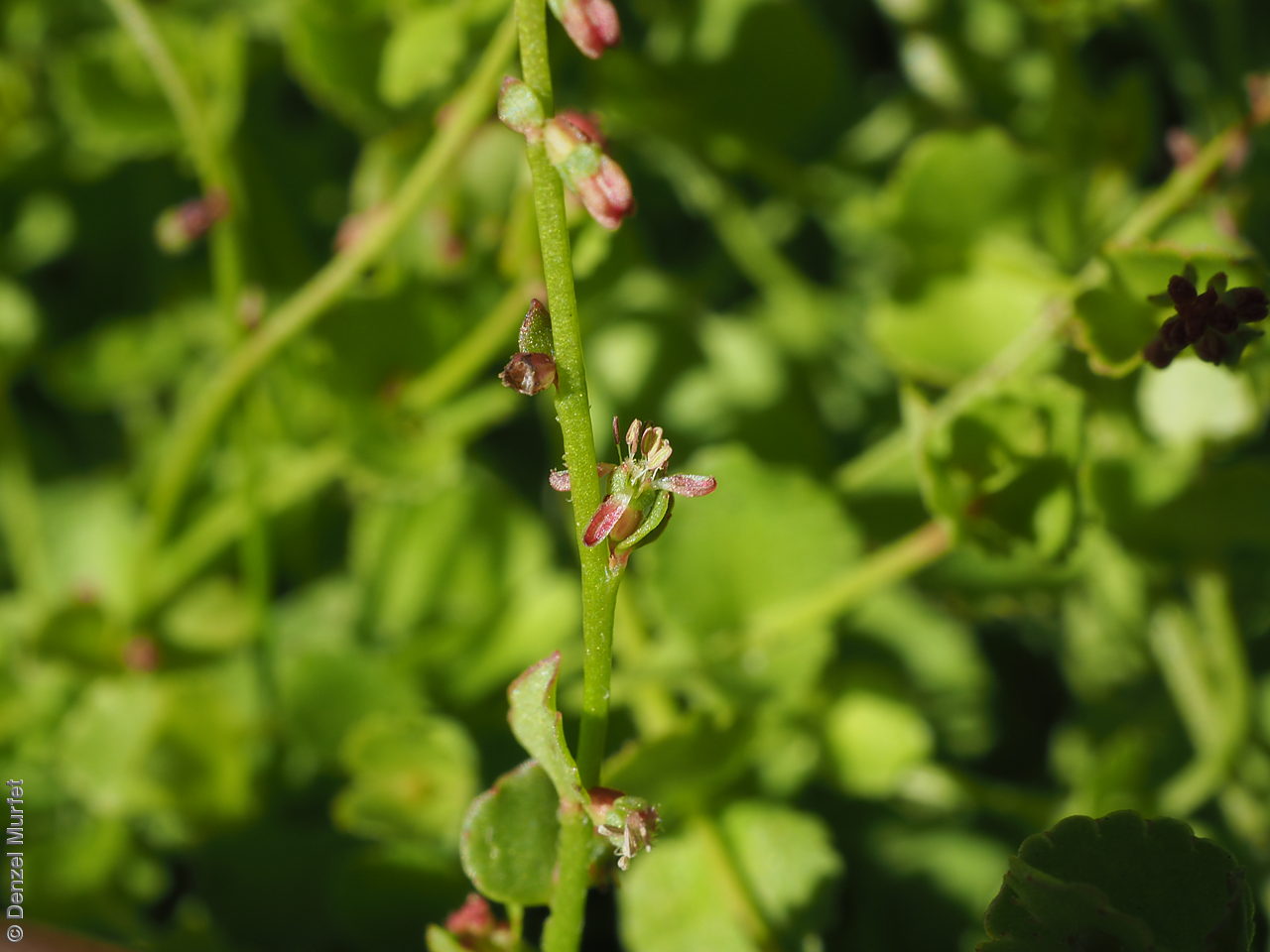
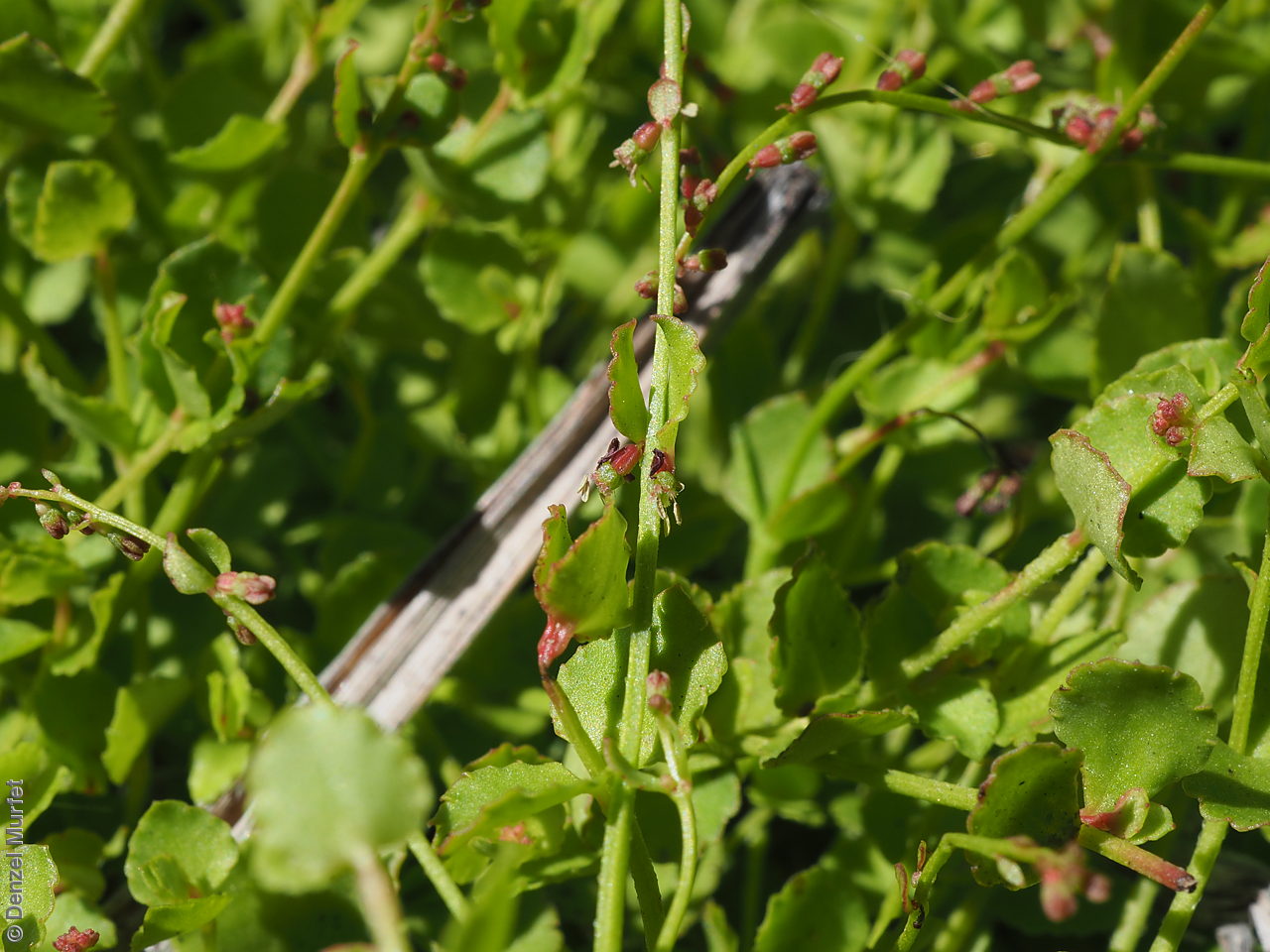
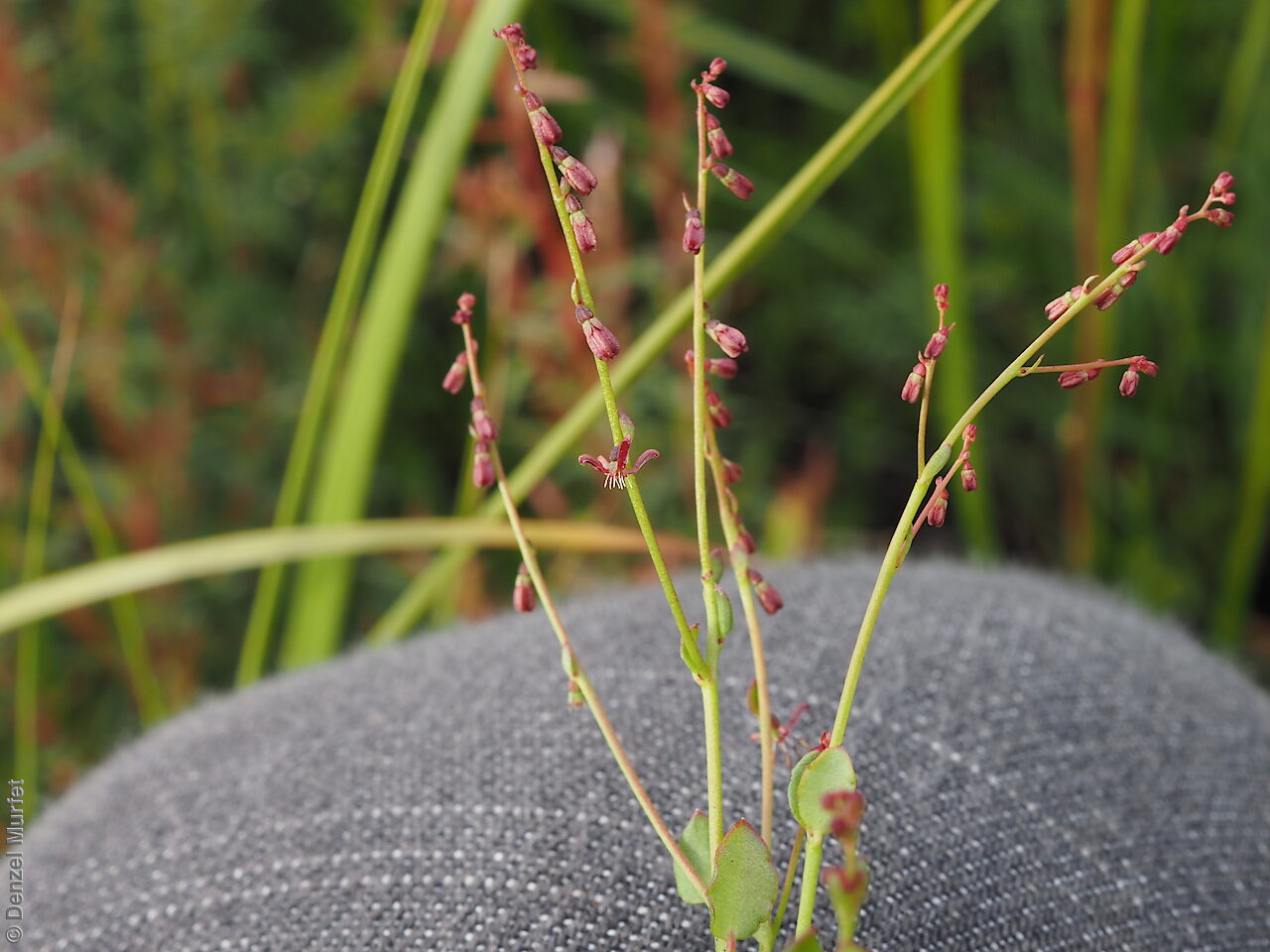
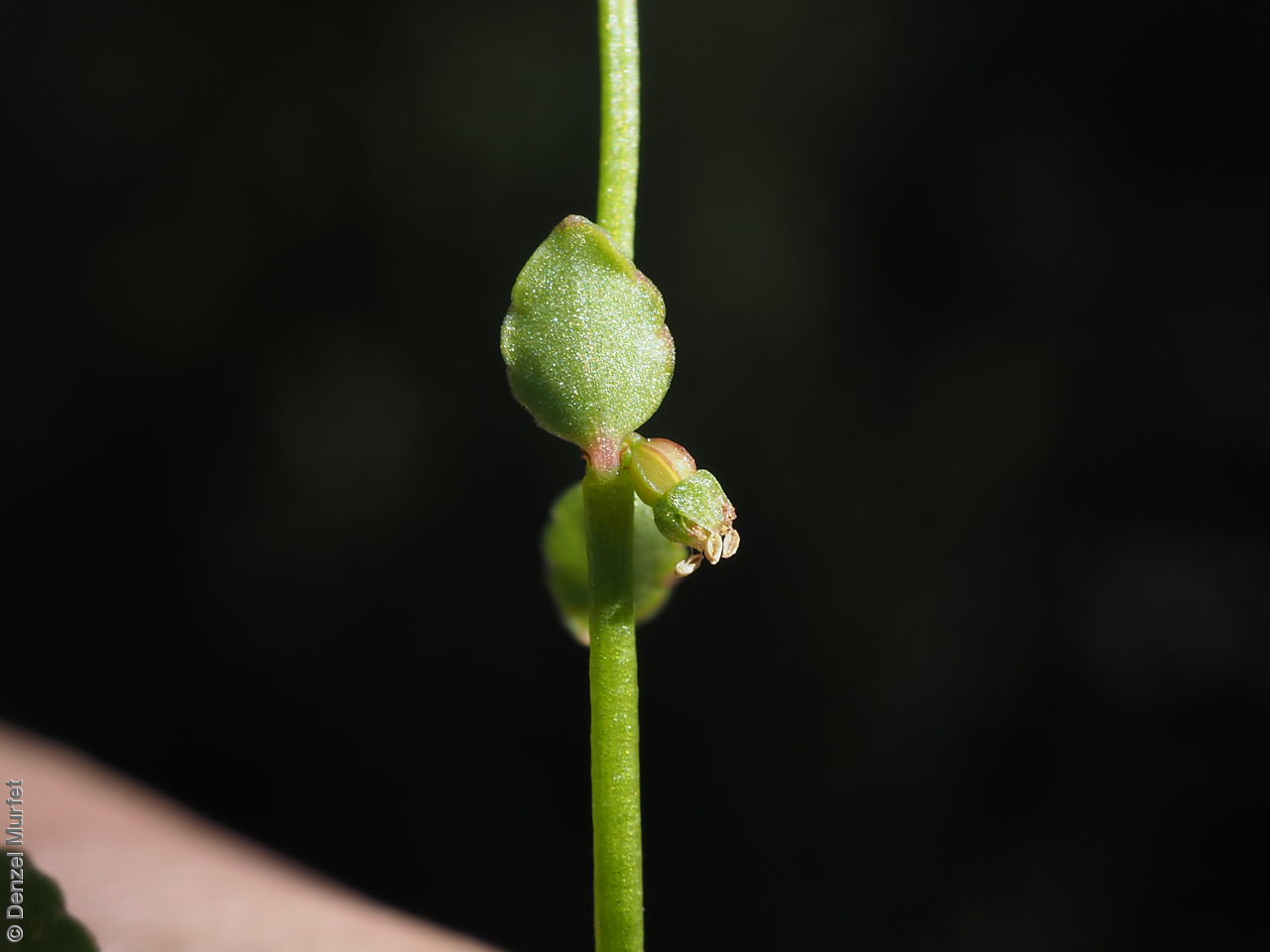
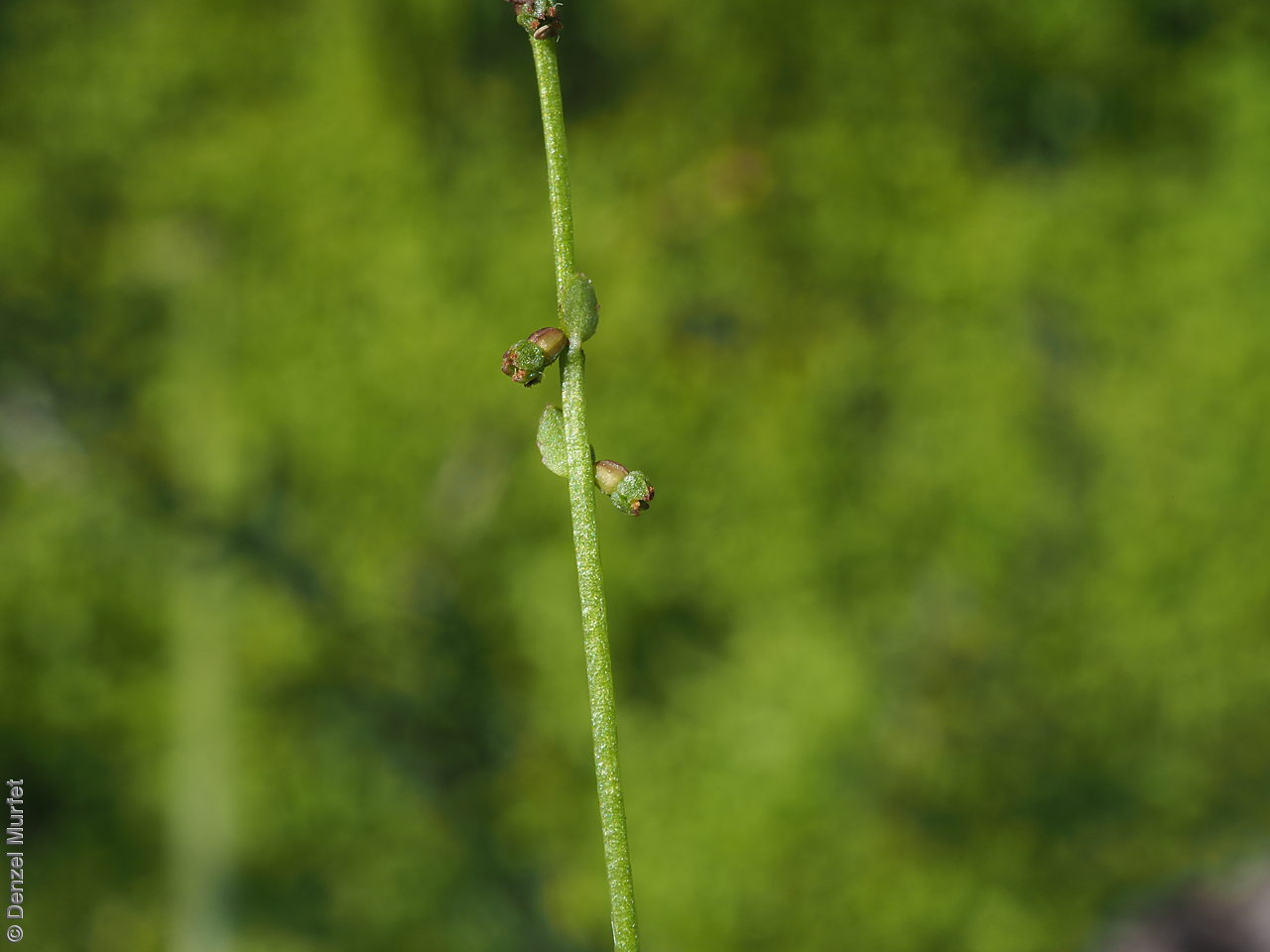
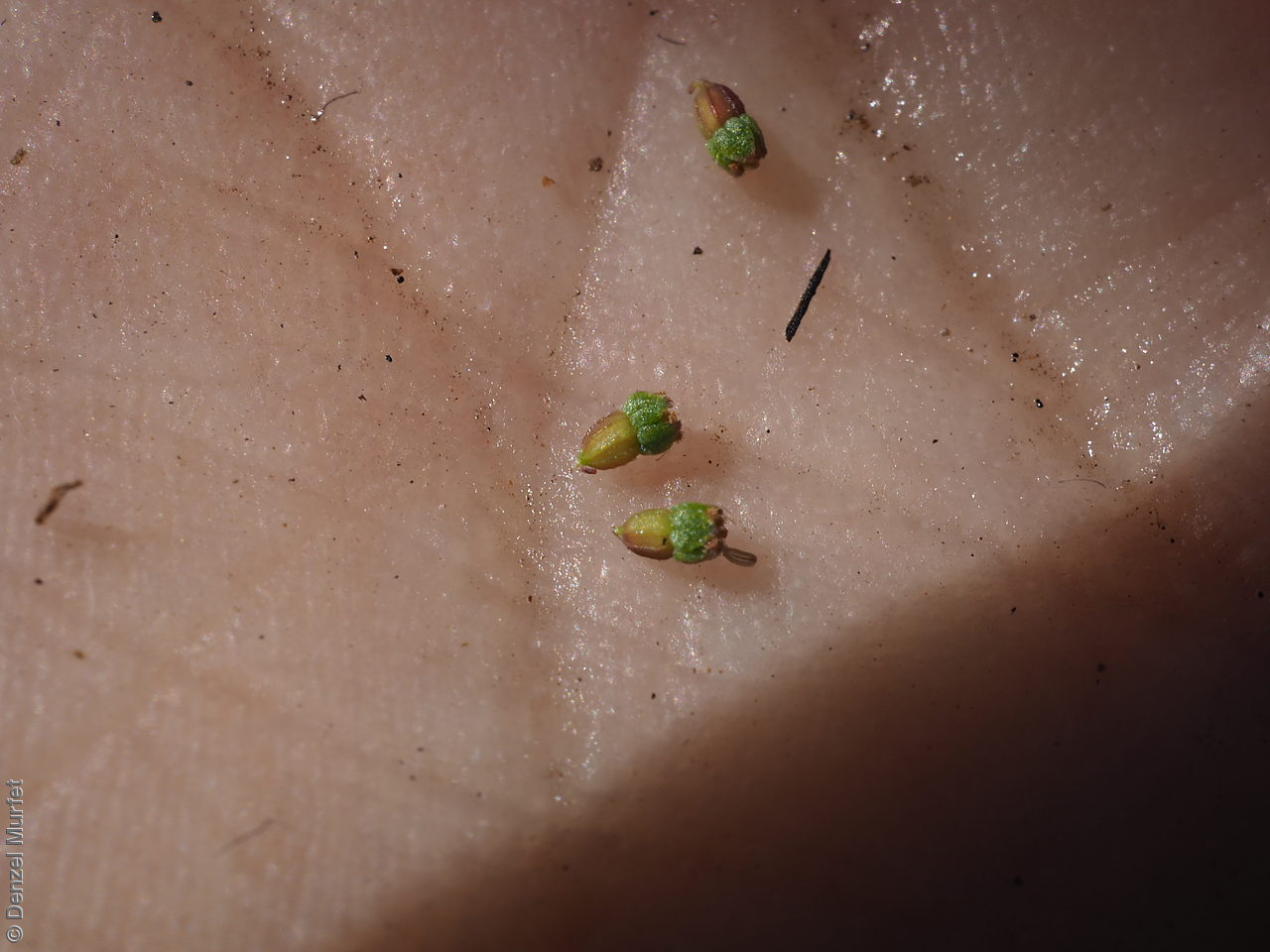
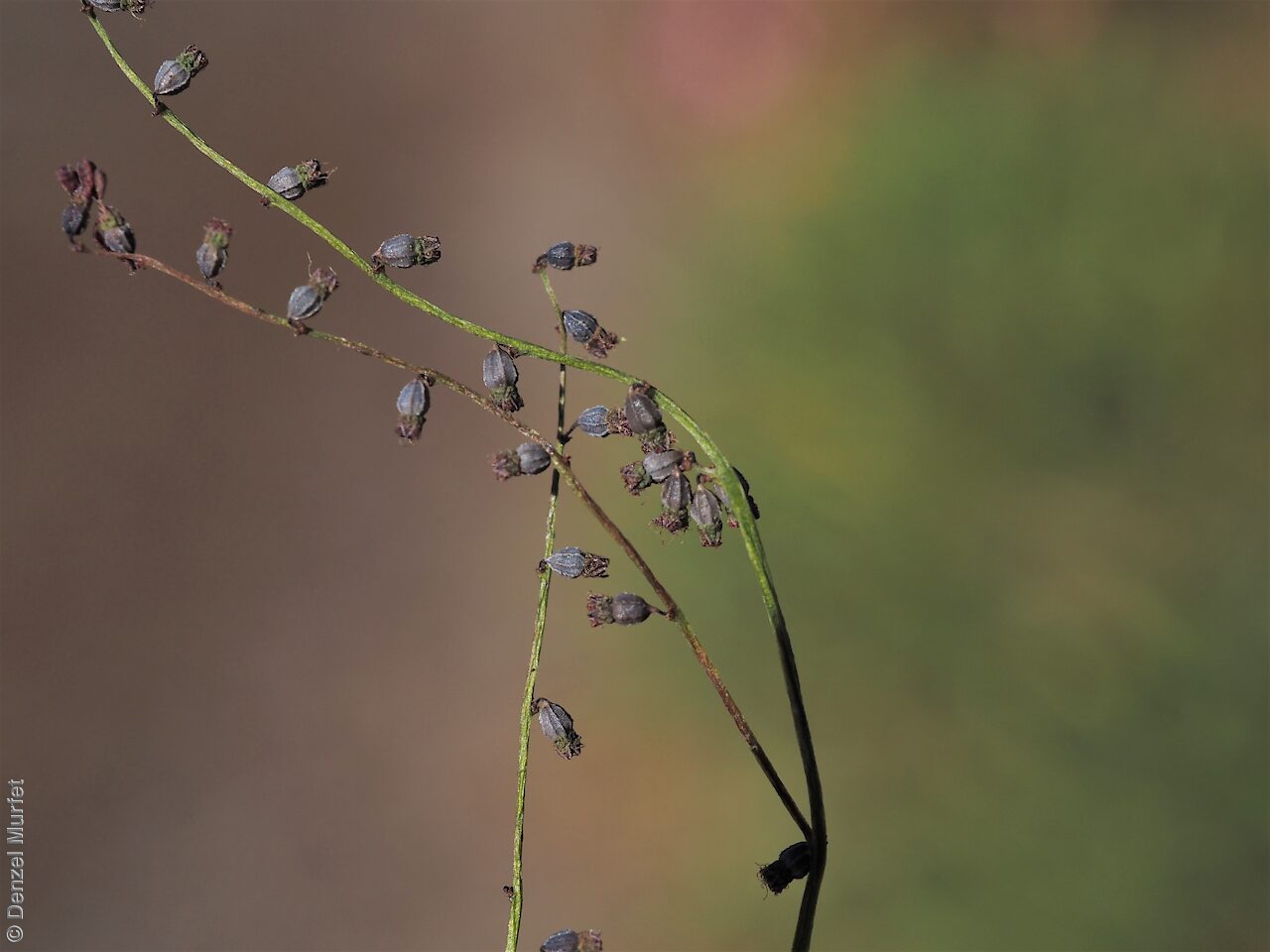

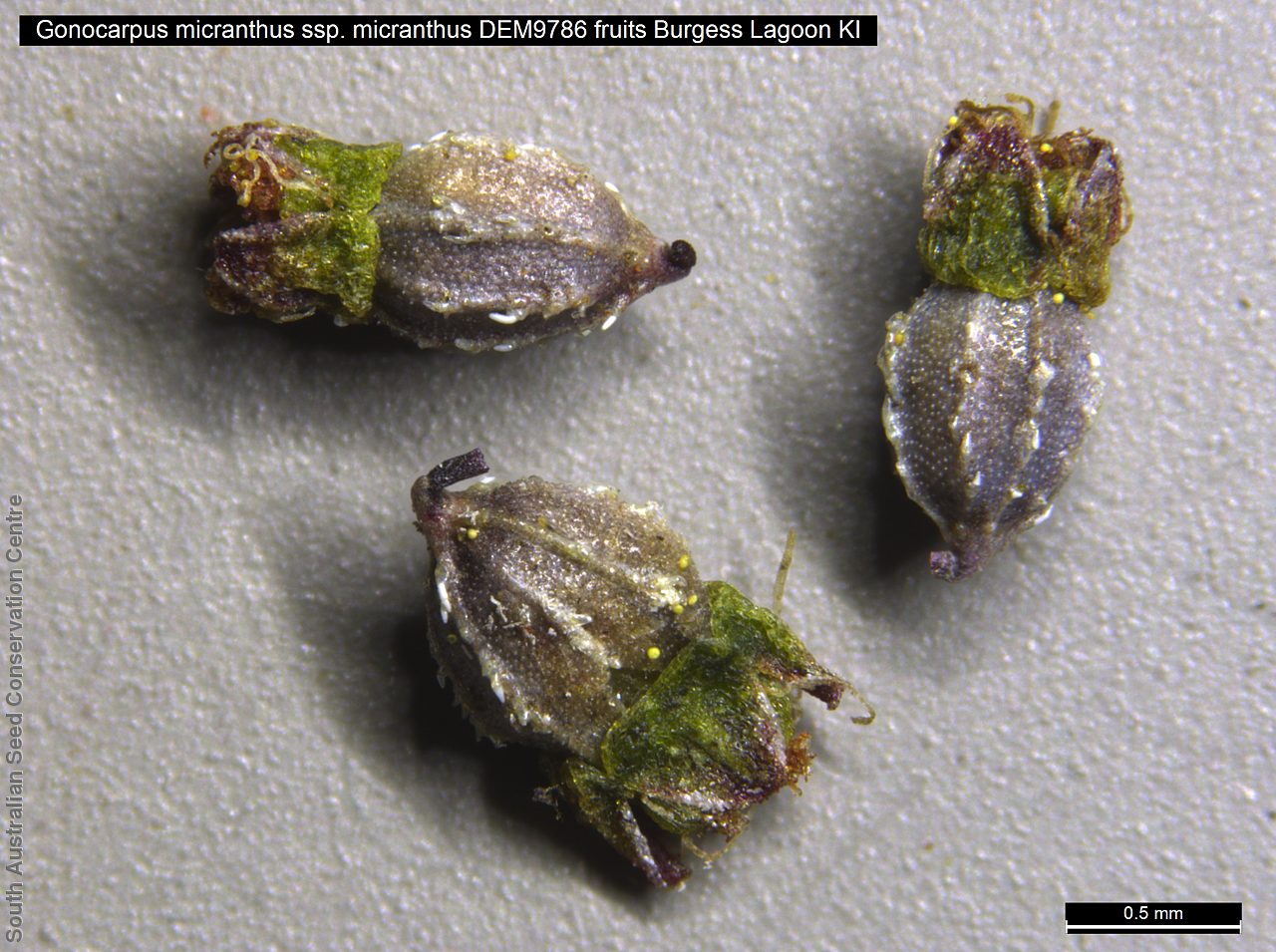
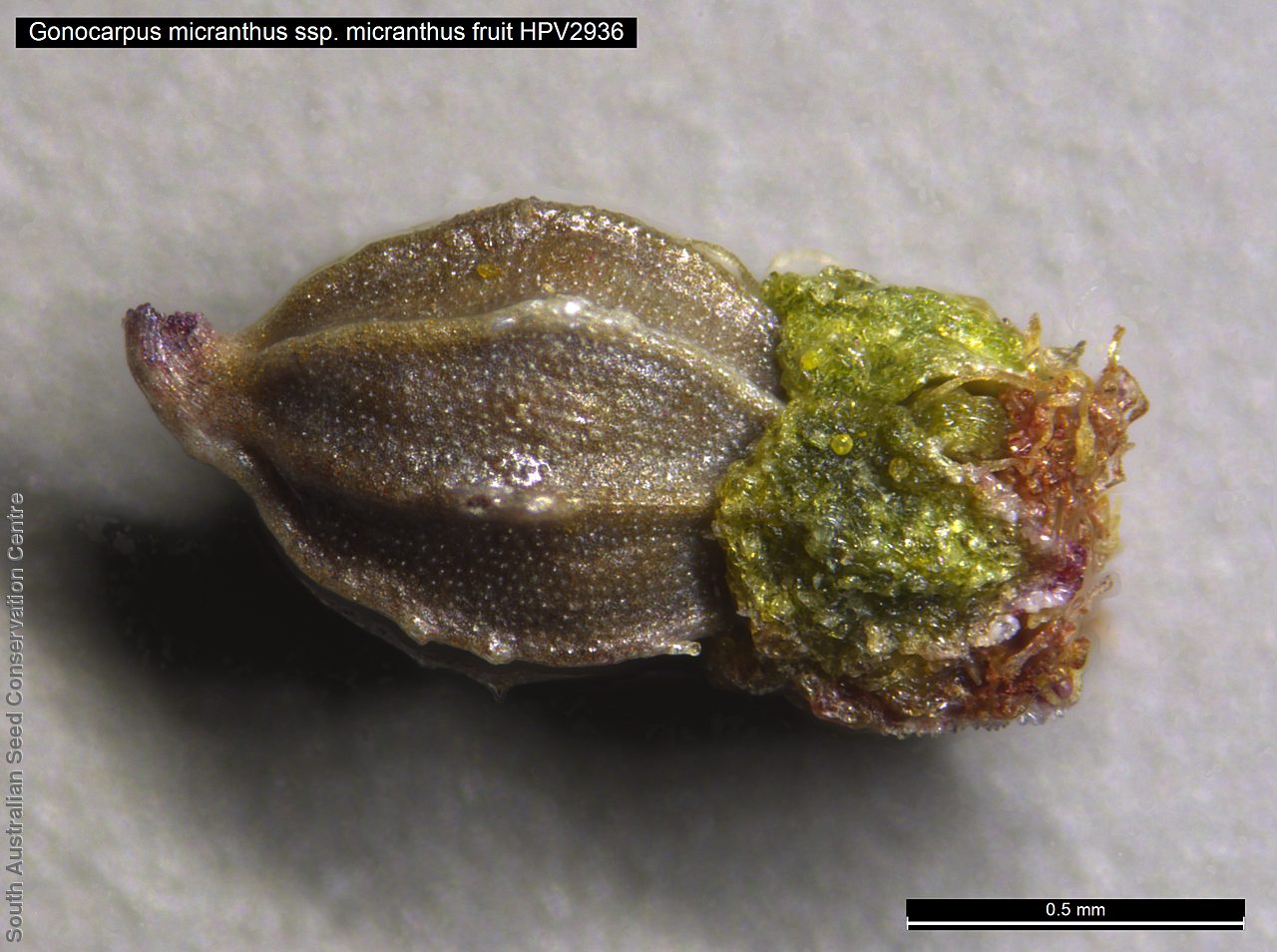
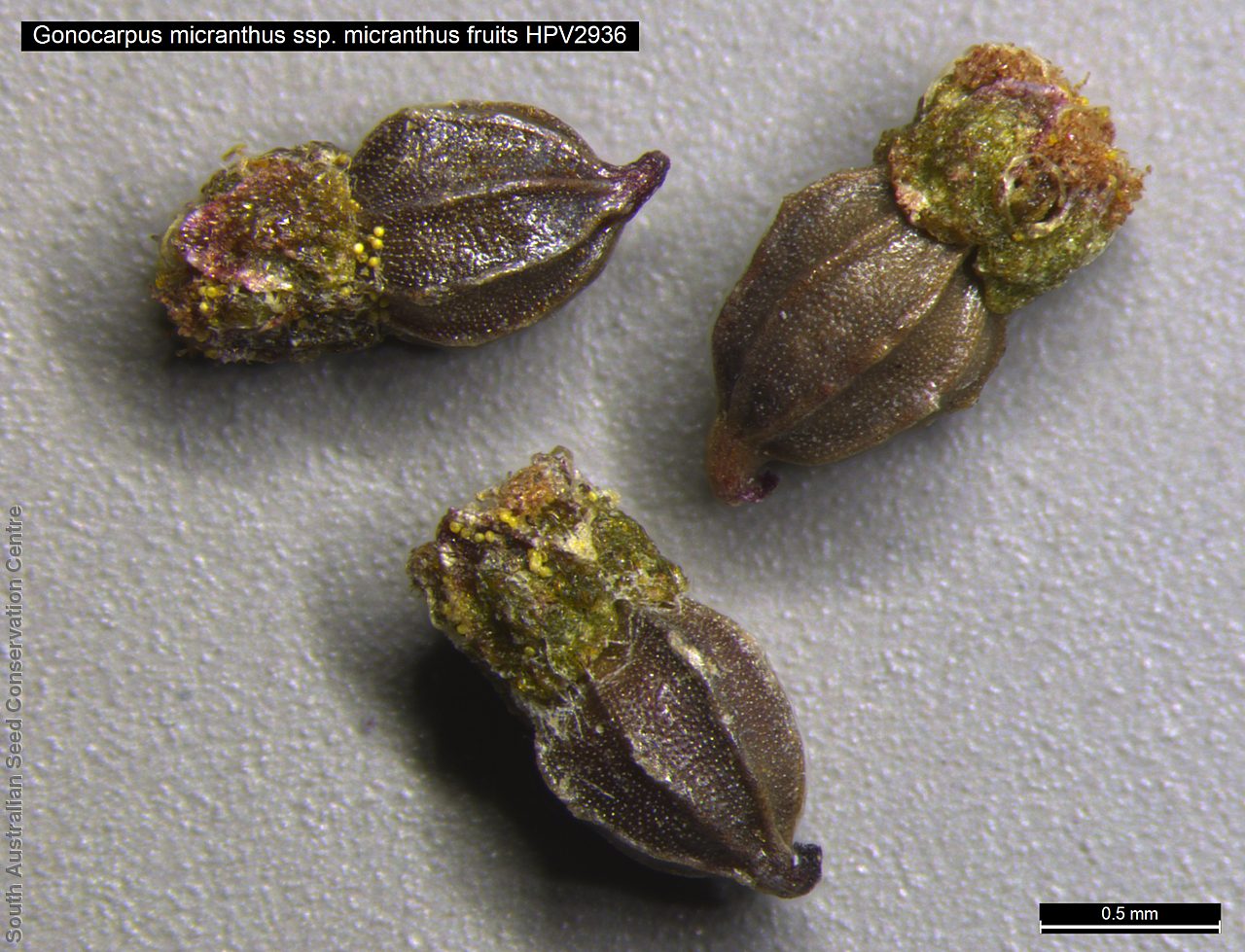
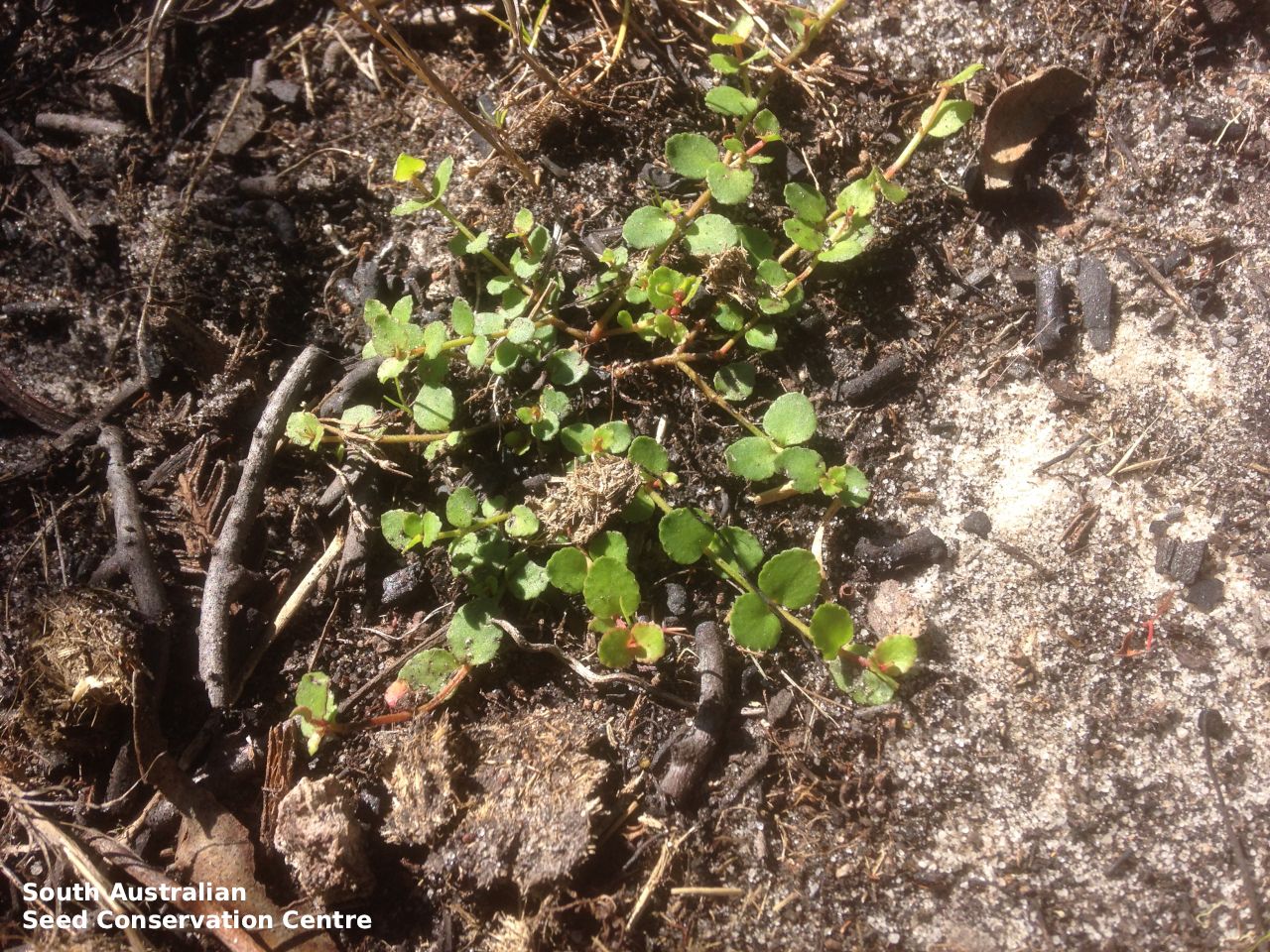

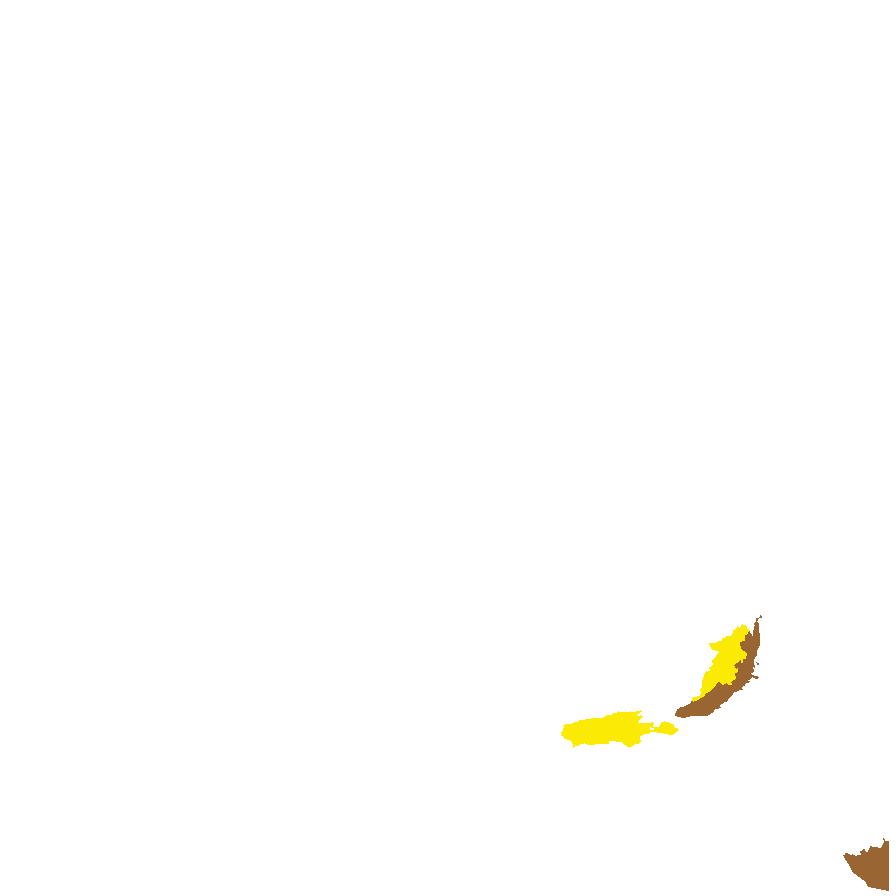
Botanical art
Prior names
Haloragis micrantha
Etymology
Gonocarpus from the Greek 'gonia' meaning angle, corner and 'carpos' meaning fruit, referring to its ribbed fruits. Micranthus from the Greek 'micros' meaning small and 'anthos' meaning flower, alluding to its tiny flowers.
Distribution and status
Found on Kangaroo Island, southern Mount Lofty Ranges and the lower South-east in South Australia, growing on wet, peaty soils. Also found in Queensland, New South Wales, Victoria and Tasmania. Native. Rare in South Australia. Rare in Queensland. Common in the other States.
Herbarium regions: Southern Lofty, Kangaroo Island, South Eastern, Green Adelaide
NRM regions: Adelaide and Mount Lofty Ranges, Kangaroo Island, South East
AVH map: SA distribution map (external link)
Plant description
Prostrate or ascending, much-branched herb to 10 cm high, with smooth stems, rooting at the nodes and forming mats in open areas. Leaves opposite, ovate to circular, to 15 mm long and 11 mm wide, base rounded or cordate; margins thickened with many small teeth; glabrous. Inflorescence erect, branching leafy-spike at the tip of stems, with numerous reddish flowers. Flowering between December and February. Fruits are small purple-red ovoid fruit to 1 mm long and 0.81 mm wide, with 8-ribbed and scabrous surface. Seeds are considered the same as the fruit.
Seed collection and propagation
Collect seeds between January and April. Collect maturing fruits, those that are fat and turning reddish, by running your hands along the fruit-spikes. Place the fruit in a tray and leave to dry for 1 to 2 weeks. No further cleaning is required if only fruits were collected. If collected with other material, use a sieve to separate the unwanted material. Store the seeds with a desiccant such as dried silica beads or dry rice, in an air tight container in a cool and dry place.
| Location | No. of seeds (weight grams) | Number of plants | Date collected | Collection number Collection location | Date stored | % Viability | Storage temperature |
|---|---|---|---|---|---|---|---|
| BGA MSB | 5,250 (1.05 g) 5,250 (1.05 g) | 100+ | 15-Feb-2006 | HPV2936 South Eastern | 1-Aug-2006 | 65% | +5°C, -18°C |
Number of plants: This is the number of plants from which the seeds were collected.
Collection location: The Herbarium of South Australia's region name.
% Viability: Percentage of filled healthy seeds determined by a cut test or x-ray.